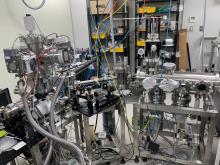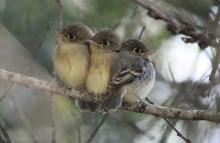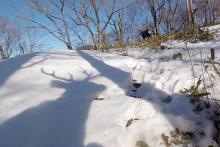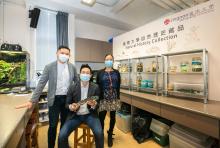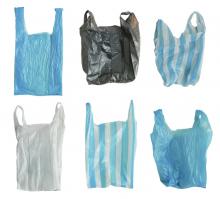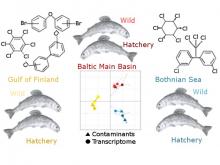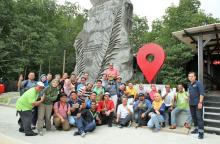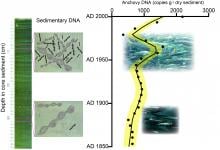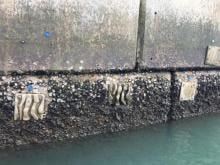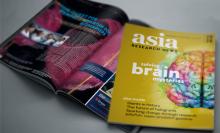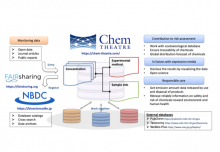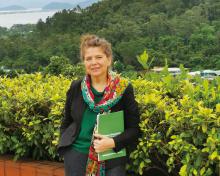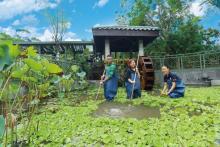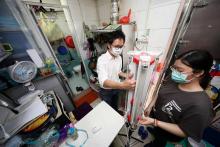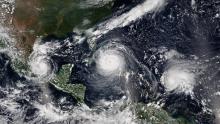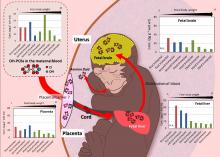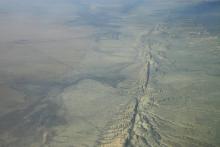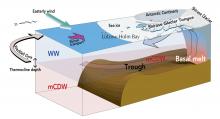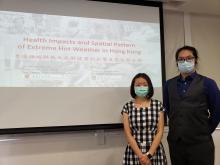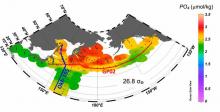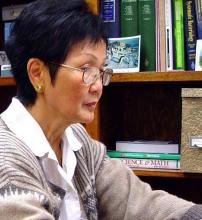Environment
News

11 Feb 2021
ARN's February newsletter features research about catalyzing plastic recycling, the mental health toll of the COVID-19 pandemic, antiperovskites and oolong tea. In honor of International Day of Women and Girls in Science, we also have tips for addressing gender bias in STEM communications, and inspirational stories about pioneering female scientists from our Giants in History series. Read on...
04 Feb 2021
This article is an excerpt from the Hokkaido University research magazine “Tackling Global Issues vol.3 Fighting the menace of zoonosis" (link below).
03 Feb 2021
Hokkaido University scientists show that under laboratory conditions, ultraviolet light reacts with nitrophenol to produce smog-generating nitrous acid.

02 Feb 2021
Carbon dioxide (CO2) is one of the major greenhouse gases causing global warming. If the carbon dioxide could be converted into energy, it would be killing two birds with one stone in addressing the environmental issues. A joint research team led by City University of Hong Kong (CityU) has developed a new photocatalyst which can produce methane fuel (CH4) selectively and effectively from carbon dioxide using sunlight. According to their research, the quantity of methane produced was almost doubled in the first 8 hours of the reaction process.
02 Feb 2021
It’s not only climate change impacting bird reproduction.
28 Jan 2021
Researchers from The University of Tokyo have designed a new type of system using listening devices to detect and track deer positions in the wild
21 Jan 2021
Lingnan University in Hong Kong (LU) has recently established a publicly accessible Natural History Collection (the Collection) of specimens of local amphibians and reptiles to document Hong Kong’s biodiversity, and for research, conservation and education purposes.
05 Jan 2021
For the first time, researchers have used a novel catalyst process to recycle a type of plastic found in everything from grocery bags and food packaging to toys and electronics into liquid fuels and wax.
04 Jan 2021
Reproduction of native and invasive bitterling fishes and their hybridisation was studied in Japan. We collected mussels in which these bitterlings lay their eggs, kept them in aquaria, collected eggs/larvae ejected from mussels, and genotyped them. We found that hybrids occurred when local mussel density was low. The rapid decline of the host mussels and artificial introduction of an invasive congener interacted to cause the rapid decline of a native fish.
16 Dec 2020
Researchers of Ehime University and the University of Helsinki measured hepatic organohalogen (OHC) concentrations and gene expression profiles in Atlantic salmon collected from three areas in the Baltic Sea. The results showed that OHCs and gene expression profiles were individually grouped in three areas and the covariation of the two datasets provided by a multivariate method was significantly similar. This suggests that the gene expression profiles in salmon are affected by OHC contamination.
14 Dec 2020
High quality biofertilizer can be generated from food waste mixed with microbial super strains.
14 Dec 2020
Local development issues are often complex and involve multiple stakeholders, making them difficult to solve. IIUM transdisciplinary expert Irina Safitri Zen of the Sustainability Leadership for Community (SL4C) program says academics need to develop core competencies in order to translate local sustainability policies into actions.
03 Dec 2020
A team of scientists from Hokkaido University has suggested that marimo maintain their characteristic spherical shape due to the rarity of the formation of reproductive cells.
23 Nov 2020
A chance discovery leads to a simple process that can introduce ‘oxygen-missing layers’ into perovskite oxynitrides, changing their properties.
10 Nov 2020
Far too little is known about the long-term dynamics of the abundance of most macro-organism species. We used sedimentary DNA technology to quantify marine fish DNA abundance in sediment sequences spanning the last 300 years. This study first shows the existence of fish DNA in the sequences and proves that fish abundance can be tracked using sedimentary DNA, highlighting the utility of sedimentary DNA for researchers to acquire lengthy records of macro-organism species abundance.
06 Nov 2020
A joint-study led by a team of marine ecologists from City University of Hong Kong (CityU) has found that the eco-engineered tiles can increase habitat complexity on seawalls in Hong Kong, thereby effectively enhancing the marine biodiversity. The Hong Kong study is part of a global research project on the relationship between habitat complexity and marine biodiversity on human-built marine structures.
04 Nov 2020
Residents of Kabwe Town, Zambia, have very high blood levels of lead and cadmium, to such an extent that the symptoms of toxicity have been clinically observed.
02 Nov 2020
Asia Research News magazine highlights your recent results or ongoing project with a fascinating article for lay audiences, produced by our team of professional writers, editors and designers. Don't miss your chance to be a part of the 2021 edition. Submit by Nov. 30, 2020.
29 Oct 2020
ChemTHEATRE was launched in 2016 in order to provide easy access to monitoring data of chemicals in the environment. Data from different sources are stored in a well-organized format. ChemTHEATRE providing useful information more systematically than ever before.
12 Oct 2020
Governments around the world are taking steps to slow the pace of global warming. In the report titled "Hong Kong’s Climate Action Plan 2030+", a 70 per cent reduction in carbon intensity by the year 2030 was set. Achieving this ambitious target will require a major change in behaviour at both the corporate and individual levels.
29 Sep 2020
China’s success in improving air quality by cutting polluting emissions may have a negative knock-on effect on climate change overall, a new study has found.

29 Sep 2020
Climate warming will alter marine community compositions as species are expected to shift poleward, significantly impacting the Arctic marine ecosystem.
24 Sep 2020
Nestled at the base of a scenic mountain range in the northeast part of Hong Kong, the campus of The Education University of Hong Kong (EdUHK) is rich in biodiversity. Members of the University community recorded over 1,270 observations of 380 species of trees, plants, insects, birds, fungi and reptiles in the worldwide City Nature Challenge 2019.
22 Sep 2020
The COVID-19 outbreak is causing widespread disruption to daily life. Hong Kong people living in cramped subdivided flats with poor hygiene conditions have been particularly hard hit. In light of this alarming situation, Lingnan University (LU) jointly launched “Project Ultra Violite” with NGOs to provide a free, efficient UV disinfection service for 1,000 subdivided flats. It is the territory’s first community-wide programme using UV disinfection technology.
21 Sep 2020
Looking for experts who can comment on natural disasters when they occur, or disaster planning and research? We have compiled a list of experts from across Asia prepared to speak with journalists on a wide range of disaster types and issues.
14 Sep 2020
This study selected the Japanese macaque (Macaca fuscata) as a model animal for the fetal transfer of OH-PCBs in humans, and revealed OH-PCB concentrations and their relationships in the maternal and fetal brains. The key finding from this study is that OH-PCBs can reach the developing brain of the fetus as early as the first trimester of pregnancy. These OH-PCBs may exceed the levels that induce adverse effects on neurodevelopment.
01 Sep 2020
Researchers from the Earth System Science Programme at The Chinese University of Hong Kong (CUHK) have revealed that slow earthquakes, a new type of earthquake discovered about 20 years ago, follow similar scaling relations as regular earthquakes, e.g. rate of aftershocks and formula that relates an earthquake’s energy release with how long it lasts. This discovery opens a pathway for scientists to use these events as easy-to-study analogs to probe the physics governing the power and timing of devastating earthquakes, generating a clearer picture of how energy is released with time along faults.
24 Aug 2020
Ice is melting at a surprisingly fast rate underneath Shirase Glacier Tongue in East Antarctica due to the continuing influx of warm seawater into the Lützow-Holm Bay.
24 Aug 2020
Hong Kong has been experiencing hotter summers and more scorcher days in recent years due to climate change and heat island effect. Amid the increasing number of “hot nights”, it is found that consecutive “hot nights” are more detrimental to human health than “very hot days”, although the actual temperature does not reach the level of daytime, according to a collaborative research conducted by the Institute of Future Cities at The Chinese University of Hong Kong (CUHK), as well as researchers from the University of Hong Kong.
The research also identified that lack of urban greenery and poor air ventilation in a high-density context are factors that lead to more “hot nights” than “hot days” in some areas. The team suggests that better urban planning and building design are long-term mitigation measures.
07 Aug 2020
A group of researchers from three Japanese universities has discovered why the western subarctic Pacific Ocean, which accounts for only 6 percent of the world’s oceans, produces an estimated 26 percent of the world’s marine resources.
Events
Sorry, no events coming up for this topic.
Researchers
Sorry, no researchers coming up for this topic.
- « first
- ‹ previous
- 1
- 2
- 3
Giants in history
Tetsuya Theodore Fujita (23 October 1920 – 19 November 1998) was a Japanese-American meteorologist who created the Fujita scale that classifies the strength of tornadoes based on damage to structures and vegetation.
Archana Sharma (16 February 1932 - 14 January 2008) conducted research into plant and human genetics that expanded the understanding of both botany and human health. In relation to botany, she uncovered the means by which asexually-reproducing plants evolve into new species.
Roseli Ocampo-Friedmann (23 November 1937 – 4 September 2005) was a Filipino-American scientist whose research focused on cyanobacteria and microorganisms that inhabit extreme environments.
Edgardo Dizon Gomez (7 November 1938 – 1 December 2019) was a Filipino marine biologist who recognized the need to protect marine resources, especially coral reefs, in the Philippines.
Anna Mani (23 August 1918 – 16 August 2001) was an Indian meteorologist who contributed significantly to the understanding of solar radiation, ozone and wind energy by developing a wide range of measurement tools. One of India’s pioneering female scientists, Mani excelled in the male-dominated area of meteorology and became the Deputy Director-General of the India Meteorological Department.
Võ Quý (1929 – 2017) was a Vietnamese ornithologist who studied the destruction of tropical forests and agricultural lands in Vietnam by Agent Orange, a herbicide used by the U.S. military during the Vietnam War. In addition to planning forest restoration projects, Quý rediscovered the rare eastern sarus crane, an endangered species that had vanished during the war.
Japanese geochemist Katsuko Saruhashi developed the first method and tools for measuring carbon dioxide in seawater



